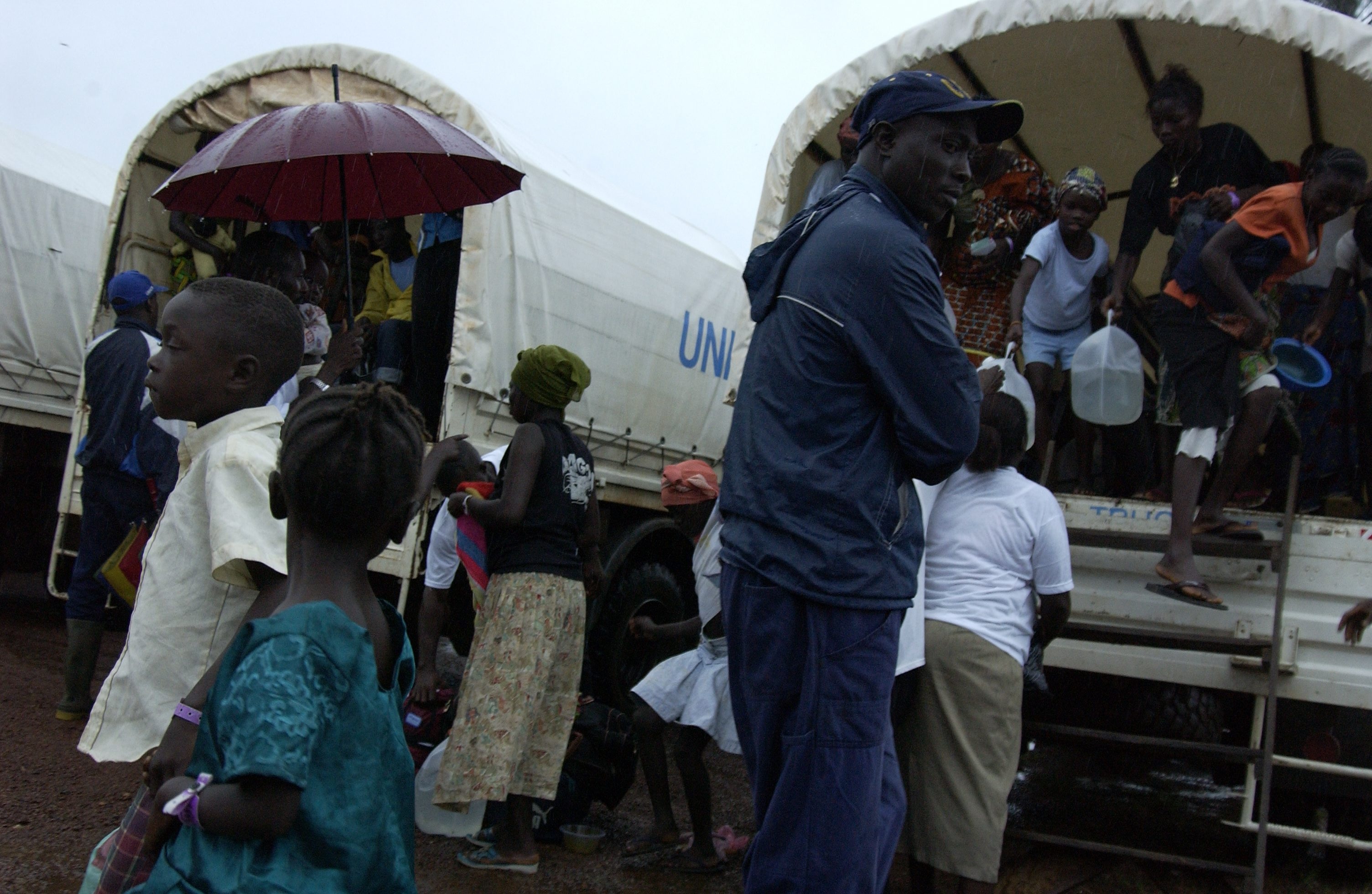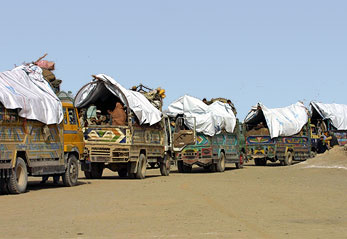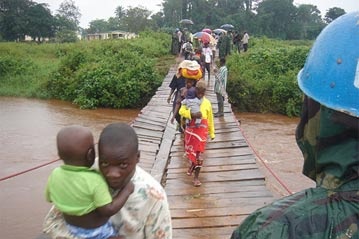Unit plan for ages 12-14 in Art: Repatriation and Graphic Communication
Unit plan for ages 12-14 in Art: Repatriation and Graphic Communication
-

Refugees with their worldly possessions, which they will need to restart life back in Sierra Leone.
UNIT OBJECTIVES
Knowledge
To recognise the difference between repatriation, local integration and permanent resettlement. To understand that refugees want to return to their own homes, in their own countries. To recognise the difficulties and possible dangers that refugees have to face when they return home. Skills To encourage students to use signs and symbols to convey a message. Values To empathise with returnees. To appreciate the blessings of having a home and a homeland.
LESSON 1: Going home
| ||||||||
LESSON 2: Picking up the pieces
| ||||||||
LESSONS 3 and 4: Getting on with life
| ||||||||





